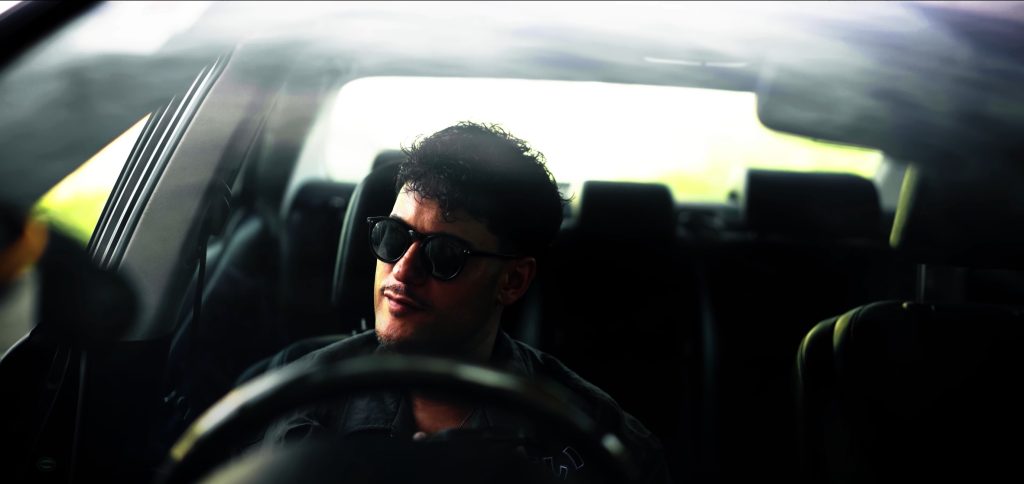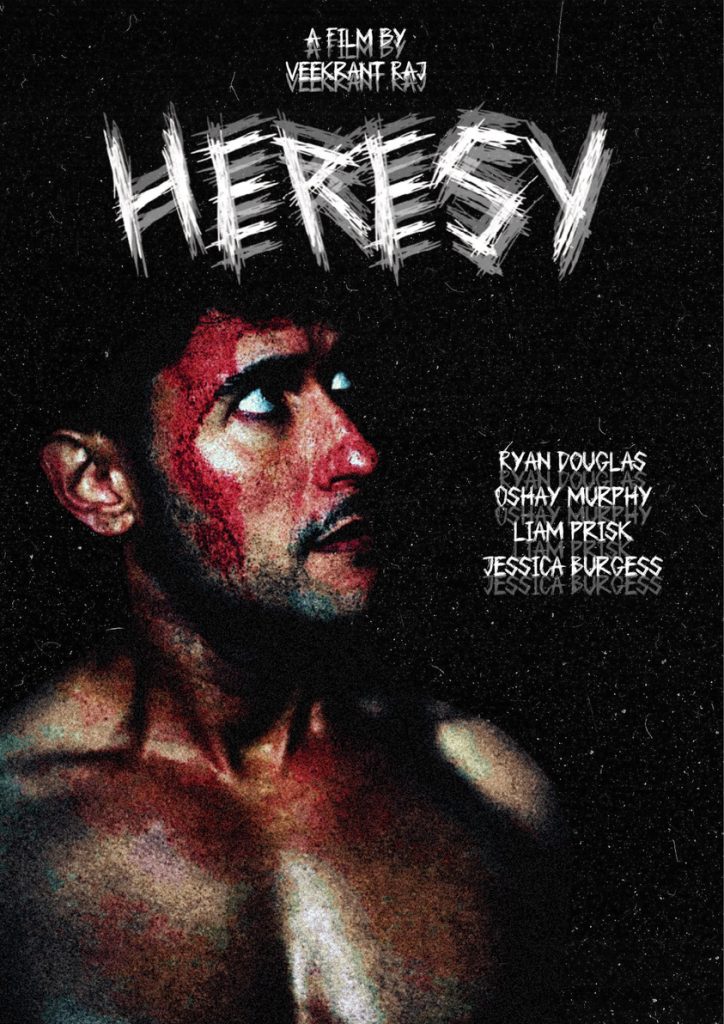After committing petty thefts around the area, troubled friends find themselves in a serious situation that leads to clashes with underground groups in the community. This is Veerkat Raj’s thriller Heresy.

The new thriller from Veerkat Raj is a huge improvement on his debut film, Tender Lies, which we previously reviewed here at Screen Critix a few years ago. Tender Lies was a short survival horror film involving cannibals that we gave a mainly positive review to, along with the note,s ‘Raj can do better.’ Thankfully, the director took our advice and has done just that with Heresy.
What you first notice in Raj’s film is the use of neon lighting. This immediately evokes a strong 1980s aesthetic, drawing obvious inspiration from the stylized worlds of Michael Mann’s Miami Vice, Friedkin’s To Live And Die In LA, and the vibrant colours of similar films around this period. This lighting style, characterized by bold hues of pink, cyan, electric blues, and greens, does more than create visual appeal; it underscores the psychological and moral ambiguity of the characters’ world. The glow of neon often bathes the characters in artificial light, blurring the line between reality and illusion. It makes their world feel flashy and fake and shows how the characters are getting pulled into a dangerous and confusing place. It enhances the nighttime atmosphere of isolation, danger, and the seductive pull of a subculture that is both glamorous and threatening. The lighting isn’t just for show, it helps tell the story of how far they’re slipping into a much darker criminal underworld.

The performances in Heresy are admittedly stiff, lacking subtlety or nuance, but this style works surprisingly well within the film’s tone. Rather than detracting from the story, the wooden delivery and rigid character interactions echo the feel of the low-budget Globus and Cannon films from the 80s. This stiffness adds to the uneasy atmosphere, giving the film a sense of detachment and tension that complements its neon-lit, retro feel. In this way, the performances, although rough and unpolished do actually serve the mood and genre effectively, enhancing the gritty, off-kilter energy.
Unfortunately, one of the more distracting elements of Heresy lies in its sound quality, particularly in the first half of the film. Issues with dubbing, looping, and on-location sound recording often make it difficult to hear or understand the dialogue between characters clearly. These technical shortcomings disrupt the flow of scenes and can pull viewers out of the experience. Additionally, the soundtrack suffers from uneven editing, with background music occasionally playing at mismatched volumes or overlapping awkwardly with dialogue. Audible cuts and distortions in the audio further highlight the film’s rough edges, undermining some of its more atmospheric and emotional moments.

While Heresy is far from perfect, its rough charm and bold stylistic choices make it an enjoyably average ride. The film’s neon visuals and retro vibe help it stand out, even when the acting and sound design miss the mark. It wears its 1980s crime cinema influences proudly, leaning into the genre with affection and ambition. Despite its flaws, Raj has crafted something oddly compelling, with the lo-fi energy and unpolished delivery making Heresy a significant step up from his previous effort and, surprisingly, far more entertaining than expected.
Leave a Reply